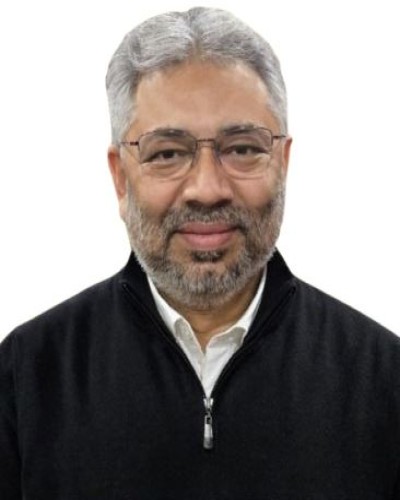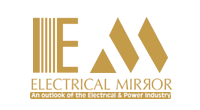
VICE PRESIDENT
( POLYWATER APAC & GCC )
IMTEYAZ SIDDIQUI
Q.What key milestones defined Polywater’s journey over the past 50 years, and how have these milestones contributed to growth and innovation?
An interesting question, as there’s a lot to cover from over 50 years of history and experience. But let’s start at the beginning. Like the origins of most companies, Polywater started quite modestly. It began as a side project by an entrepreneurial inventor named Nelson Jonnes. He developed the world’s first water-polymer cable lubricant, revolutionizing cable-in-conduit installation. Unlike traditional lubricants such as soaps, greases, and bentonite clay, water-polymer lubricant significantly reduced cable tension, enabling safer and more efficient installations with longer pulls and tighter bends. This Polywater lubricant quickly gained traction due to its superior performance, cleanliness, and ease of use. As demand grew, the company expanded its lubricant formulations to meet diverse field needs, including cold weather, vertical applications, and power plant specifications. By the 1980s, Polywater had become “The Lubricant Company,” forging strong industry relationships with OEMs, standards boards, engineers, and contractor tradespeople. The company also pioneered testing methods to assess material compatibility and built a comprehensive Coefficient of Friction (COF) database. This research led to the launch of the Polywater® Pull-Planner®, a cable installation software that helps engineers and installers optimize conduit system design and validate pull tensions. A modern version of this tool remains widely used today. In fact, we recently launched the latest version, which was rebuilt from the ground up and represents an entirely new platform for the Pull-Planner. This tool continues to elevate the practice of cable installation. As fibre optic installation advanced with airassisted equipment, Polywater was instrumental in helping optimize this process with the introduction of its PreLube line of lubricants. This high-quality lubricant coats the inner walls of the conduit prior to cable installation and reduces frictional drag during cable blowing—increasing both the length and speed of the installation. In subsequent decades, Polywater expanded its portfolio to include fibre optic and electrical splice cleaners, as well as high-performance expanding foam sealants to protect cable and conduit systems from water ingress and other intrusions. These product additions addressed the need to protect assets and harden systems. Thus, taking Polywater from a lubricant company to a solution provider of cabled infrastructure. Polywater further invested in its sealant and adhesive line, creating asset repair solutions for damaged wooden utility poles and ageing transformers. These two product lines were major contributions for utility companies looking to maximize and extend the life of their ageing assets by making permanent repairs that brought new life to equipment. For utilities, this produced significant cost savings by avoiding the replacement of equipment and reducing downtime. The company also grew internationally, establishing a European subsidiary in the Netherlands by the mid-2000s. Polywater then focused on market expansion, strengthening its global distribution network through OEM partnerships and specialized distributors. This eventually led to our latest subsidiary, Polywater APAC & GCC, which I am proud to lead. Today, Polywater continues to innovate, evolving its product offerings to meet the demands of the electrical and communications infrastructure sectors. Our success is driven by a deep understanding of market needs and the ability to anticipate industry trends.
Q.How has Polywater adapted to the evolving needs of the electrical and communications industries, and what changes have you made to stay competitive in these sectors over time?
Polywater is a field-focused provider. We are driven by customer collaboration and a commitment to solving specific field challenges. In that sense, we are in a constant state of adaptation to meet customer needs. This ongoing dialogue between our lab and the field is a quality that distinguishes us from other manufacturers. By truly understanding the conditions installers face, we can adapt and evolve our offerings to remain relevant. A key factor for our customers is the field performance of our products. We subject all of our products to rigorous standardized testing before releasing them to the market. Our testing reflects real-world materials, use configurations, application constraints, and environmental conditions. By doing this, we anticipate potential performance barriers and ensure installer teams are well-equipped. We also maintain strong relationships with industry organizations, cable and conduit manufacturers, and design and build engineers. This collaboration allows us to introduce new products and formulations that effectively address emerging field challenges
Q.Could you provide an overview of Polywater’s core product range, including adhesives, sealants, cleaners, and lubricants? What makes each of these categories stand out in the market?
Our core product lines focus on helping engineers and network owners optimize their system designs, assisting tradespeople and contractors in installing cables more efficiently and safely and supporting maintenance and field crews in repairing and protecting critical infrastructure assets. To accomplish this, Polywater has three main global product line categories: Cable Lubricants, Sealants/Adhesives, and Cleaners. What stands out about our portfolio is not just the performance advantages of our products but also the intense research and testing that goes into their development. Our lab and customer support teams are outstanding. Each product is backed by exceptional technical support from Polywater—a rarity among companies today. A defining characteristic of our products is the balance between performance and usability. For example, a high-performing sealant system is ineffective if the installer finds it too complicated or time-consuming. In such cases, it may not be applied correctly or may be replaced with an inferior alternative. We go to great lengths to ensure our products meet or exceed performance and field requirements while remaining simple to use. This balance is what sets our solutions apart. Additionally, our products provide an advantage to customers due to our commitment to manufacturing quality, advanced chemistry, field reliability, usability, proven performance, and readily available technical support. Companies have attempted to replicate the characteristics of Polywater products, but time has shown that our level of innovation and expertise is difficult to match.
Q.In what ways does Polywater’s commitment to sustainability influence the design and manufacturing of your products? How do you ensure environmental preservation in your processes?
Polywater has been mindful of our environmental and community impact since our founding in 1973 with the invention of water-polymer lubricant technology. Environmental and social responsibility remain at the core of our operations. We uphold five key sustainability practices:
• Prioritizing responsible sourcing: We select vendors with high-quality materials and strong sustainability practices.
• Reducing resource consumption: We minimize energy and water use through process improvements, automation, and lean manufacturing principles. A rooftop solar system powers our factory
• Optimizing transportation: We lower transport emissions through volume sourcing, expanded local 3PL warehousing, and distributor incentives for larger, more efficient shipments.
• Minimizing waste: We implement recycling programs to reduce manufacturing byproducts, measure waste output, and set reduction goals.
• Developing environmentally friendly products: Our water-based and low-toxicity formulations replace petroleum-based lubricants and ozone-depleting solvents.
Q.What challenges do you foresee in the electrical and communications sectors, and how is Polywater positioning itself to address these challenges moving forward?
The global rate of change is high, and industries are evolving rapidly. New policies, mandates, and regulations will continue to shape the electrical and communications sectors. However, the greatest challenge ahead is supporting infrastructure growth. As demand on the electrical grid increases due to higher consumption, renewable energy integration, and electrification, the need for robust infrastructure has never been greater—especially with ageing systems adding further strain. Similarly, the demand for faster, more reliable communications networks is rising. Addressing these challenges requires more than just innovative technology from manufacturers; it demands strong partnerships among municipalities, utilities, network owners, design and build engineering teams, planning and construction teams, and service providers. At Polywater, we believe the future will be built through collaboration. We have always prioritized cooperative efforts to solve field-specific challenges, and we will continue to work alongside companies that share this vision.
Q.Looking ahead, where do you see Polywater in the next few years, and what strategic focus areas will be key to ensuring its continued growth and relevance in the industry?
Polywater plays a crucial role in larger infrastructure systems, and these systems are not going anywhere. The world will continue to rely on electric power and communications networks, and we remain dedicated to supporting the companies that build and maintain these essential systems. We have long been committed to underground cabling for electricity transmission and distribution. Around the world, undergrounding initiatives are increasing to enhance system resilience and reliability, especially in response to weatherrelated events and ageing infrastructure. Polywater will continue to support these efforts by providing innovative solutions for duct and conduit systems. To meet global demand, we are also expanding our presence in the Asia-Pacific (APAC) and Gulf Cooperation Council (GCC) regions. As Vice President of our second subsidiary, I am excited to lead this expansion and collaborate with businesses in these markets. Additionally, we recognize the importance of industry knowledge transfer. With many experienced workers retiring, the electrical and communications sectors face a knowledge gap. Polywater is committed to bridging this gap by sharing technical expertise through our Knowledge Hub and other industry initiatives. Our focus remains on innovation, collaboration, and knowledge-sharing to ensure long-term growth and success in the industry


